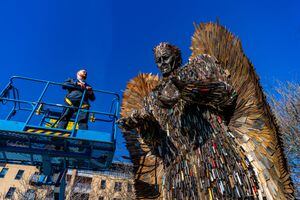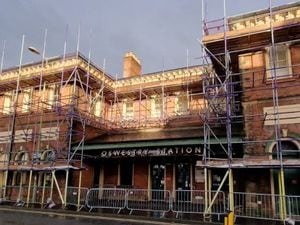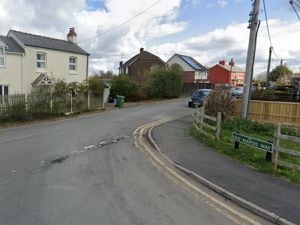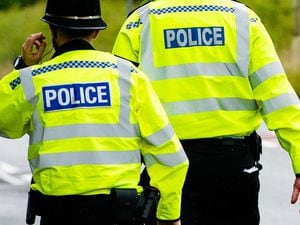Knife Angel heading to Coventry on tour of UK
The Knife Angel is on the move again – continuing its growing tour of the nation’s cathedrals.

Currently in Hull, the sculpture will travel to the Midlands in March and will remain in Coventry – the city of peace and reconciliation – until after Easter.
Knife crime is especially topical in Coventry after several high-profile attacks, including the fatal stabbings of The Specials’ Neville Staple’s grandson Fidel Glasgow, 16-year-old Jaydon James and 27-year-old Daniel Kennell.
The Knife Angel was created by sculptor, Alfie Bradley at Oswestry’s British Ironwork Centre.
Chairman of the centre, Clive Knowles, launched the Surrender your knife, Save a Life, campaign, using weapons handed in or seized by police across the UK, to create the piece of art.
This week he appealed to other cities to follow Liverpool, Hull and Coventry’s lead and host the sculpture in a letter that has been sent to every cathedral in the UK.
Mr Knowles said it was important that the angel goes to the most troubled cities where knife crime has been a particular problem.
He added: “It deliberately displays an expression of confusion. It is perplexed about why there is so much violence and why we are all hurting each other. We hope it will ignite debate and conversations between government, police forces and educational bodies.”
The Knife Angel will stand in front of the remains of the old cathedral, bombed during the Second World War.
On the night of November 14, 1940, Coventry fell victim to the most devastating aerial bomb attack in British history, killing hundreds of people, and destroying much of the town.
The decision to rebuild the cathedral was made the morning after it was reduced to rubble not as an act of defiance, but as sign of faith, trust and hope for the future of the world.
The Coventry Cathedral ruins still stand today alongside the city’s beautiful new cathedral, as a lasting symbol of peace and reconciliation, and Coventry’s strength and survival.





